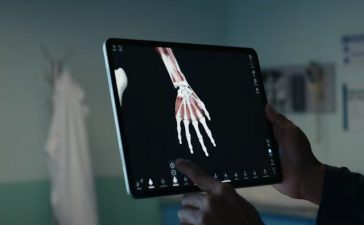One of the technologies being explored by videoconferencing software vendors involves the use of Deep Fake avatars to present at, or attend, meetings. The avatars allow a presenter to alter their appearance so they always look sharp and to pre-tape their speech for a more professional result. Eventually, the avatar could do the talk from a script generated by artificial intelligence (AI).
Invitees who can’t attend could have their avatars take their place and both transcribe and summarize what happened so they can selectively choose what to watch or just read the parts they’re interested in. Since neither the presenters nor the attendees would be in attendance — remember, they’re all avatars — simply sending out the script and summary of the talk would be a more efficient use of resources.
What got me thinking about this was a recent interview scandal where former President Donald Trump — or someone pretending to be him — gave an interview to Real America’s Voice. (Although “Trump” didn’t really sound like himself, and a reporter looking into the incident wound up talking to someone who wasn’t the person they thought they were, the media outlet insisted the interview was real. Trump did, too.)
The whole brouhaha shows we’re quickly reaching a time when it may not be clear who is on the other side of your computer monitor, either listening to you or giving a talk. This could lead to a whole host of security problems and wasted resources and wind up making meetings even less engaging than they are now.
How Deep Fake technology should be used
We all attend meetings where, once they’re over, we realize the only thing accomplished was to waste time. As we begin to rely more and more on AI tools, our ability to write a presentation and produce slides will go from days and hours to minutes and seconds. We’ll even be able to have AI avatars give the presentation using our image, making it easy and cheap to create high-quality presentations. But if attendees also use this technology to “attend” and then summarize the meeting, things start to get complicated fast.
Certainly, avatars could provide deeper engagement. For instance, rather than having your AI alter ego create and give a generic talk, what you say could be tailored for each virtual audience member; you’d be giving custom presentations that specifically cover whatever information each attendee needs and nothing more. That’s the ideal.
The reality is that these tools could also be used in ways that make things worse by effectively cutting off a presenter from the audience. What many presenters fail to realize is that meetings aren’t about filling time — they’re about accomplishing some other goal. Meetings should be about collaboration, not performance art. They should consist of short, engaging presentations that get everyone on the same page and result in some kind of actionable conclusion. (The “on the same page” thing often can be done with short, brief visuals.)
Rather than rushing to embrace this new technology, a more efficient path would be to send out a rich email or document covering the material, asking for feedback and commitments, and then, if needed, having individual or group meetings based on any concerns or questions. This changes the focus from giving presentations — whether live and in person or through avatars — to engaging the people you’re talking to. And, if you follow up with a summary of the commitments and progress reports, meetings become fewer and more actionable.
Who wouldn’t want fewer meetings?
The practice of making presentations with content that few are interested in is a waste of time and resources. If we embrace Deep Fake-like avatars, we might free up some time but get even less engagement and waste more digital resources. We need to constantly question whether a meeting is necessary, and if so, construct it around engagement and collaboration by allowing genAI technology to create dynamic meeting notes, track commitments, and report on progress.
In short, as Deep Fake technology advances, we run the risk of taking today’s bad meeting practices and automating them for even more wasted time. We also run the risk that people in a virtual meeting, or giving a presentation, or even doing an interview with the media, may not be who we think they are.
Copyright © 2023 IDG Communications, Inc.












